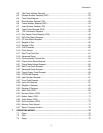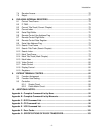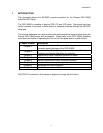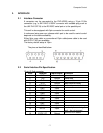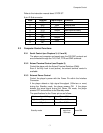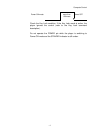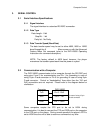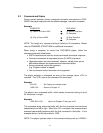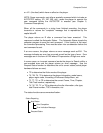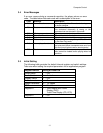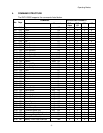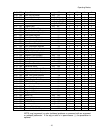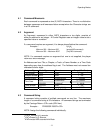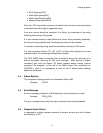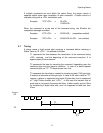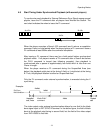
Computer Control
or <LF> (line feed) which have no affect on the player.
NOTE: Some commands, sent after a specialty command which includes an
AUTOSTOP setting, (PL, MF, MR, etc.), cause the player to execute the
new command before the AUTOSTOP is enacted (see Chapter 5,
Command Descriptions).
When all the commands in a string have finished executing, the player
transmits or returns the "complete" message that is represented by the
capital letter R.
The player returns an R after a command has been executed. This
response is called the Automatic Status. The Automatic Status signals the
computer program to send the next command. If this function is not used,
the command processing Time must be taken into consideration before the
next command is sent.
If an error occurs, the player returns an error message such as E04. The
message indicates an error has occurred as well as the type of error. Error
messages are in the form of EXX where XX represents a 2-digit error code.
In some cases, an incorrect command sends the player to Search within a
non-recorded area and the player returns an error message. Use the
Request Status function to determine the unit’s current status (actual player
hardware failures are rare).
• ?P to determine the Active mode of the player
• ?X, ?M, ?H, ?S to determine the player information, model name,
player region code, the setting of Advanced Setup Menu, etc.
• ?F, ?T, ?C, or ?R to determine the current Frame, Time, Chapter,
Title/Track number, respectively.
• ?V, ?K, ?G, ?Y, or ?Q to determine the disc information, disc type,
total Frame number, TOC information, etc.
The status functions are summarized below:
Status Reporting
Auto Status
Auto Completion
Error Indication Message
Request Status
- 7



